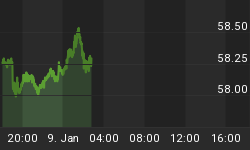...until it isn't any more. An important story for today's bond investors.
I spent my childhood discussing the stock market at the dinner table. My dad was a stock broker, and he loved to "tell the story" of the stocks he recommended to customers -- a story that included critical information about the industry, the products, earnings, and the outlook for the future. Most children might find it dull, but I was mesmerized.
As I got older and talked with friends about investing, I'd light up when the topic was stocks. Who in the world couldn't get excited about analyzing companies to decide which ones could make you money! When the conversation turned to bonds, however, I would shut down. Bonds? How dull; how utterly boring. There's no story to tell, no industry trends to follow. I saw bonds as an interest check every six months, then a return of principal when they mature. BORING.
Over the past few years, I've read article after article about investors getting out of the stock market in favor of bonds. I understood the reasons for getting out of the stock market, but the thought of moving into bonds baffled me. Interest rates were very low, and I knew that when the rates started going up, bond prices would go down; a simple inverse relationship. I started investing in the mid-80s, when rates were at the highest point of the past 50 years -- who would buy bonds now, when yields are at the lowest levels in half a century? There's no place for your principal to go but down, I thought.
So I went back and talked with my friends some more, to see if there was something I was missing with these "dull investments."
Turned out, my friends had moved their money into bonds after they lost over 30% in stocks during 2008. They told me that bonds had gone up in value. I was astonished.
So I started looking into it. They were right! I thought bond yields could go no lower than they were two years ago, yet they did, In turn, that brought the prices -- i.e., the principal on their investment -- up!
I asked what kind of bonds they got into. "High-yield bond funds," was the answer. What kind of bonds are these funds invested in? To this question I got blank stares. How long do you plan on staying in these funds? This got the reply I was afraid I'd hear: "Why would we get out when they are so much safer than stocks?" That's when my new interest in these once boring investments turned to fear -- for my friends.
First of all, the simple idea that a rise in interest rates would cause their principal to fall worried me. But my greater fear was that they did not even know what types of bonds they were invested in!
Elliott Wave International's president Robert Prechter has followed this new investment trend closely in his monthly Elliott Wave Theorist. This quote is from the October 2010 issue:
A fifth consecutive major disaster is developing for investors. History shows that investors have been attracted like moths to a flame to four consecutive pyres: the NASDAQ in 2000, real estate in 2006, the blue chips in 2007 and commodities in 2008. Now they are flitting across the veranda to a mesmerizing blue flame: high yield bonds.
Bonds pay high yields when the issuers are in deep trouble and cannot otherwise attract investment capital. The public is chasing a large return on capital without considering return of it.
You can learn more about what Prechter's market analysis says for bond investors now -- free. We've recently released a 10-page report, "The Next Major Disaster Developing for Bond Holders" free to members of Club EWI.
Discover why Prechter says that, "The public always does the wrong thing." Follow this link to access this free online report right now.
This article was syndicated by Elliott Wave International and was originally published under the headline How a "Dull" Investment Can Be a Great Investment. EWI is the world's largest market forecasting firm. Its staff of full-time analysts led by Chartered Market Technician Robert Prechter provides 24-hour-a-day market analysis to institutional and private investors around the world.
















